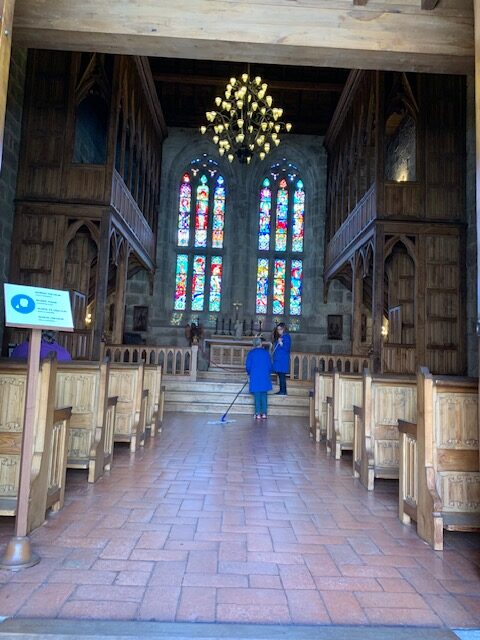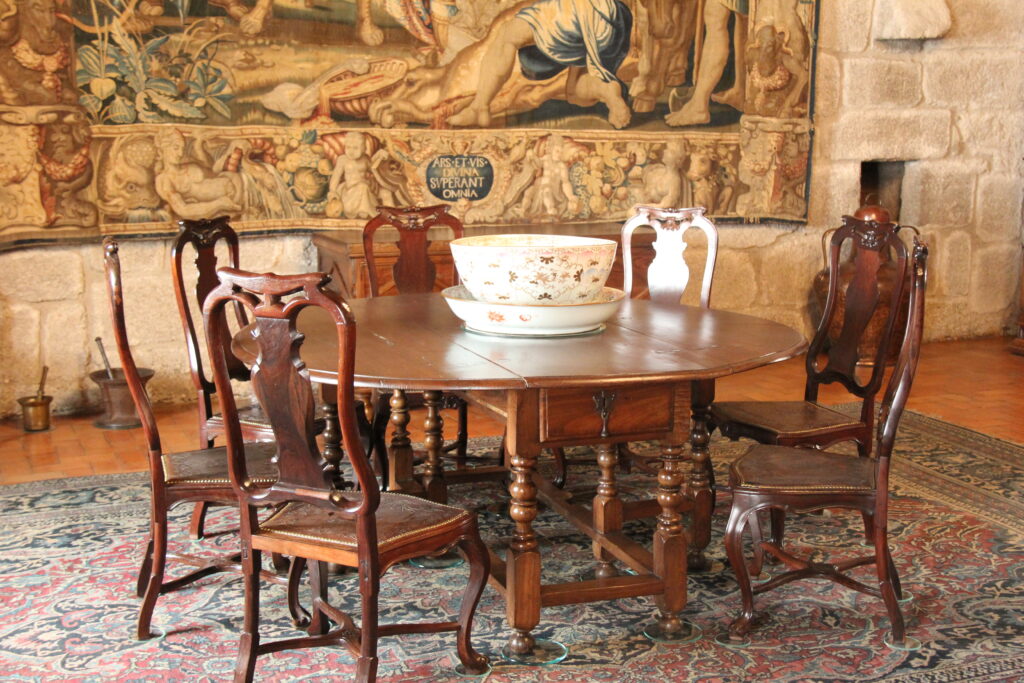We started our trip to Portugal with a visit to Guimarães, a city located in northern Portugal, in the district of Braga. Its historic town centre has been listed as a UNESCO World Heritage Site since 2001. Settlements in Guimarães, precedes the foundation of Portugal and because of its role in the foundation of the country, it is known as the “cradle of the nation” or “birthplace of Portugal”.
Guimarães Castle – This 10th century castle is associated with the origins of the Portuguese nation. In the 12th-century it became the seat and possible birthplace of Portugal’s first king, Afonso Henriques. The castle had some restorations done in the 1900s.




Igreja de Sao Damaso (Church of Saint Damasus) – This 17th century church is Located near Guimarães Castle. The blue tiles near the altar tell episodes from the life of Pope Saint Damasus, after whom the Church is named. It was not open on the day we visited the castle.

Palace of the Dukes of Braganza – The Palace was constructed on the orders of Afonso de Barcelos, in the early 15th century who later became the first Duke of Braganza. Afonso’s successors resided here until they moved to the much grander and larger Palace from the early 16th century. Between the 16th-19th century , the palace fell into ruins and many of its building stones were taken away to be used for other purposes. It was renovated in mid 19th century.


It has a chapel with wooden ceiling and impressive stained glass, a huge courtyard with stone arches, a banquet hall and it takes anywhere from 45 minutes to 2 hours to tour the palace, depending on how quickly you move. The rooms have beautiful furniture, tapestries, ceramics, weapons and more.




Largo da Oliveira – This famous square is usually the starting point of tours around Guimarães. This is also a good place to pull up a chair at a bar terrace and just savor the scene with a shot of coffee or a cold drink. The square gets its name from the olive tree still growing in the middle of the square. The Square has a Gothic monument, the Padrão do Salado. This small pavilion was built in the 1300s on the orders of Afonso IV. and is a memorial for the Battle of Salado, fought in 1340 by Portuguese and Castilian forces against a Moorish armada in Tarifa. There is also the Church of Our Lady of Oliveira (Igreja de Nossa Senhora da Oliveira in Portuguese) which is one of the most significant examples of Gothic architecture in northern Portugal. For a small fee (cash only), you can view the interior of the church.



Garden of Largo republic of Brazil and Church of Our Lady of Consolation – This attractive square with beautifully manicured garden, sits just outside of the historic city center. At the far end of the square is the Church of Our Lady of Consolation and on the distant hillside is Penha Park.


Strolling through the town of Guimaraes is a great way to spend the day. Most of the sights are within walking distance and the city is incredibly cute with colorful buildings, medieval churches and plazas and narrow cobbled streets. The Saint Mary Street holds the distinction of being one of the first streets laid out in Guimarães.


Penha Park and the Sanctuary of Penha – The park is about 7km outside Guimaraes and was once a pilgrimage site. It is the highest point in Guimaraes from where you can get a great view of the city and surrounding area. We did not have time to visit this place.
